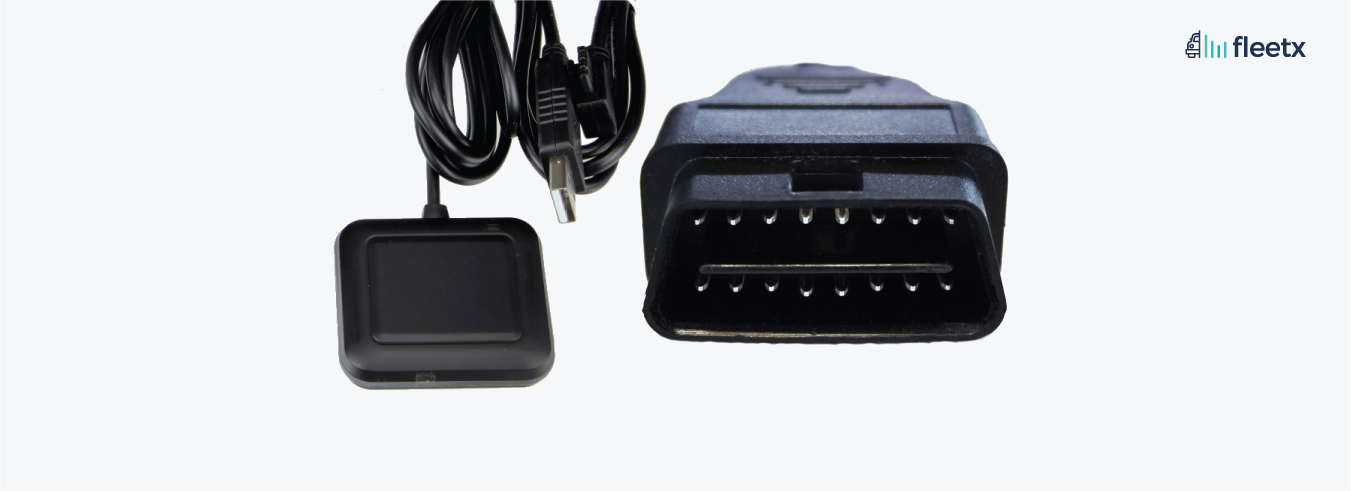
On-board diagnostics (OBD) is an automotive term referring to a vehicle's computerized self-diagnostic and reporting capability. It is a computer-based system originally designed to reduce emissions by monitoring the performance of major engine components. OBD system gives fleet owners the complete status of their vehicle engine. OBD system uses a digital communications port to provide real-time data and a standard series of diagnostics trouble codes(DTCs) that plays an important role for the fleet owner to identify the vehicle problem and get it fixed asap.
What is an OBD device?
OBD-II is an advanced plugged-in GPS Vehicle tracking device, that is compatible with BS-IV compliant vehicles or above. It’s the standardized system that allows external electronics to interface with a vehicle's computer system. OBD II is an advanced device that is plugged directly into the engine ECU and you get all the engine data. Once plugged into the vehicle it starts monitoring fuel consumption, engine temperature, emission standard, etc. OBD device is used to improve vehicle efficiency and vehicle productivity.
How does OBD II work?
Every vehicle consists of multiple sensors like the oxygen sensor, pressure sensor, engine sensor, etc. Also, a computer is fixed to the vehicle (Engine Control Unit). OBD II is plugged into ECU port and ECU received all the signals from the various sensors of vehicles and give these signals to the OBD device. All these signals are then converted into readable form with smart fleet management software. OBD is mainly popular for monitoring fuel consumption, engine temperature, emission standard, etc. And if your vehicle experiences any malfunction then a code is generated known as DTCs which stand for Diagnostic Trouble Code. It represents a type of code your vehicle’s on-board diagnostics (OBD) system uses to alert you to a specific problem your vehicle is experiencing. The codes typically consist of four or five characters.
- The first character is always a letter and represents the type of system (P=powertrain, C=chassis, etc.).
- The second character is either a “0” to signify a generic code or a “1” if it is manufacturer-specific.
- A third character is a single-digit number representing the sub-system involved in the vehicle’s malfunction
Benefit of OBD II device
Enhance fleet and driver’s safety- From tracking vehicle real-time location to tracking vehicle's safety, driver performance, and driving behavior pattern. All of these would help in enhancing vehicle performance which improves vehicle life and driver’s safety. A fleet management software with an OBD-II device always monitors your vehicle and generates real-time reports of the driver’s performance and driving activities. This data helps in reducing the harsh driving and also the chance of an accident that increases the driver’s safety.
Early Diagnosing of malfunctioning- Detecting a small problem before it gets big is a challenge for a driver. Sometimes, a little delay in fixing the issues makes the problem complex and may cause huge amount to fix the problem. Here, with the OBD-II device, you would keep yourself updated by reading the code and proactively solve the vehicle engine problem.
High compatibility across vehicles- OBD device is highly compatible with the vehicle. Once the OBD device is plugged into vehicle ECU then it will start doing its functions like monitoring fuel, engine temperature, emission standards, etc. Also, the drivers gets aware of what’s wrong going in the fleet even if it’s small through a diagnostics troubled code whenever the device sensed malfunctioning in the vehicle engine.
Get in touch with fleetx to get the OBD II device at contact@fleetx.io also schedule a free demo here.



